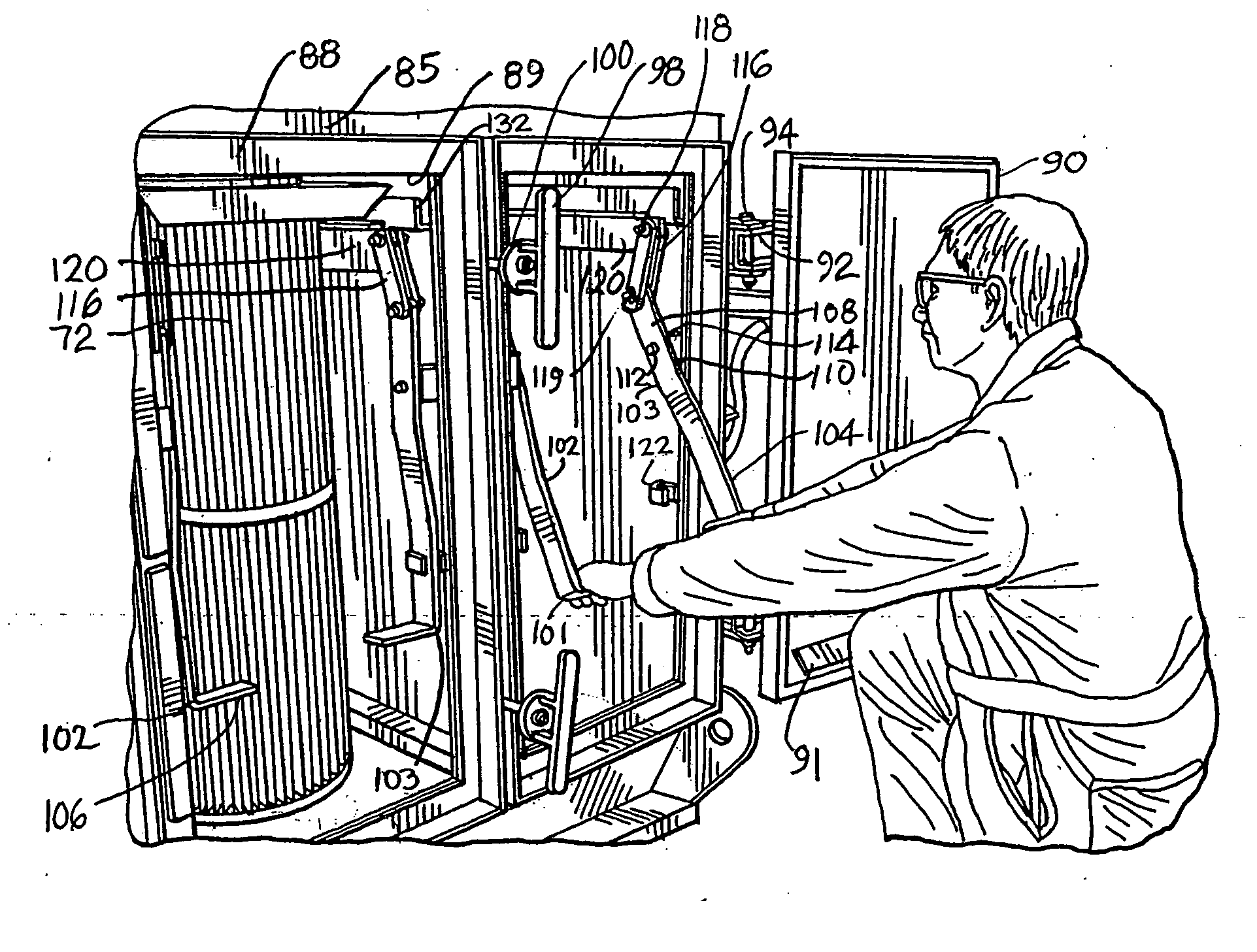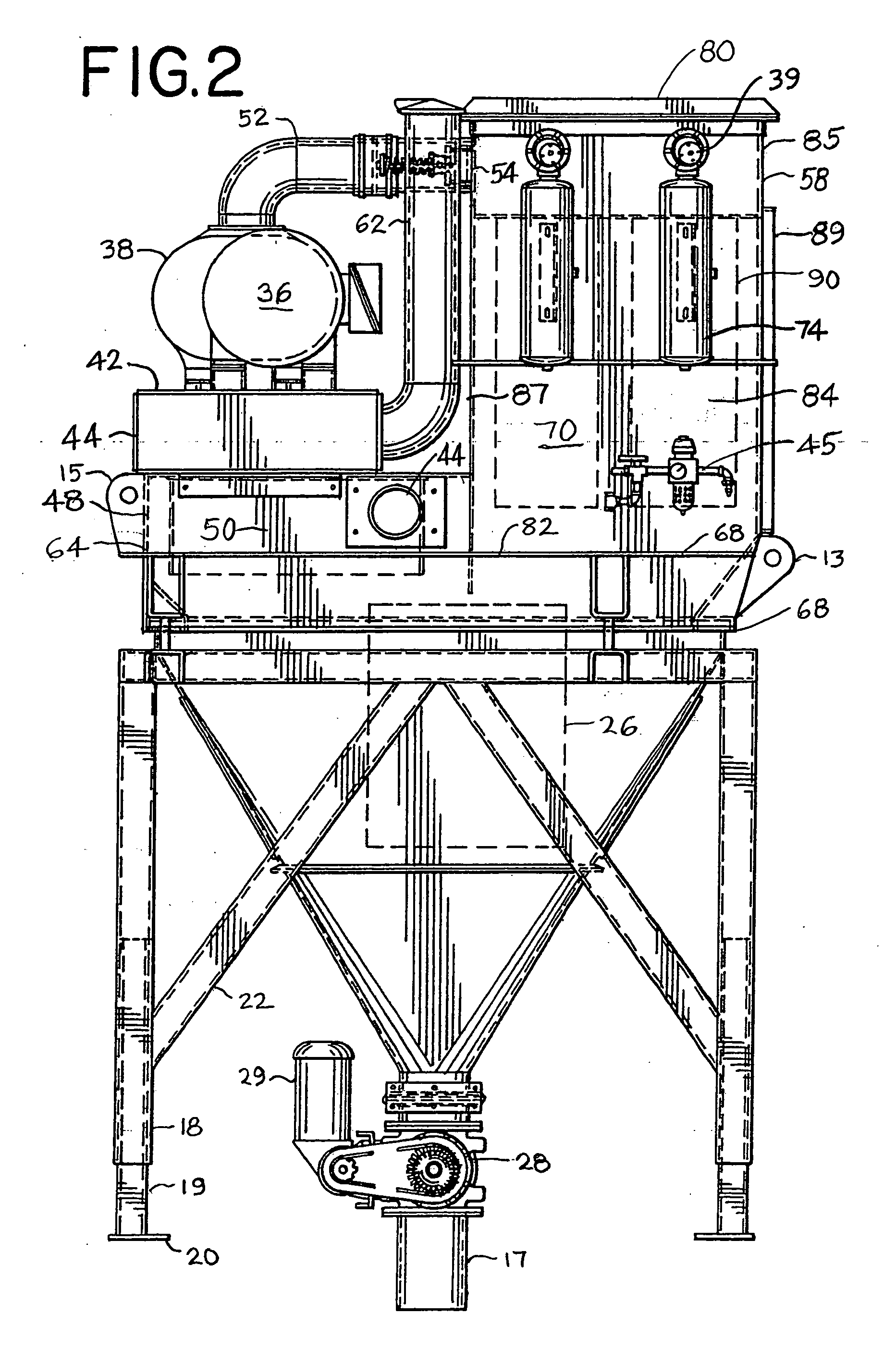Vacuum loader with filter doors
a vacuum cleaner and filter door technology, applied in the direction of dispersed particle separation, transportation and packaging, separation processes, etc., can solve the problems of affecting the efficiency and operability of equipment, affecting the health and safety of operating personnel and other on-site employees, and dust damage, etc., to improve material separation, dampen the noise emitted by the motor and the pump
- Summary
- Abstract
- Description
- Claims
- Application Information
AI Technical Summary
Benefits of technology
Problems solved by technology
Method used
Image
Examples
Embodiment Construction
[0036] A detailed description of the preferred embodiments and best modes for practicing the invention are discussed herein.
[0037] An industrial dust collector 10 (FIGS. 1-5) provides a heavy-duty vacuum-operated machine, industrial vacuum cleaner, vacuum loader and vacuum conveyor or pneumatic conveyor to efficiently remove, effectively collect, and safely dispose or convey (transfer) particulate matter, debris, and waste. The industrial dust collector can be made of steel or other metal. Other materials can be used. The vacuum loader or industrial dust collector 10 can have a frame assembly 12 with a base 14 which provides a support platform and a cradle for receiving a hopper 16 comprising a bin such as an end dump hopper. The bin (hopper) has at bottom end with a downwardly facing discharge pipe and conduit providing a hopper outlet 17. In the illustrative embodiment, the hopper comprising a bin is positioned below and supports the solids-gas separating (separation) compartment...
PUM
| Property | Measurement | Unit |
|---|---|---|
| angle of inclination | aaaaa | aaaaa |
| angle of inclination | aaaaa | aaaaa |
| angle of inclination | aaaaa | aaaaa |
Abstract
Description
Claims
Application Information
 Login to View More
Login to View More - R&D
- Intellectual Property
- Life Sciences
- Materials
- Tech Scout
- Unparalleled Data Quality
- Higher Quality Content
- 60% Fewer Hallucinations
Browse by: Latest US Patents, China's latest patents, Technical Efficacy Thesaurus, Application Domain, Technology Topic, Popular Technical Reports.
© 2025 PatSnap. All rights reserved.Legal|Privacy policy|Modern Slavery Act Transparency Statement|Sitemap|About US| Contact US: help@patsnap.com



